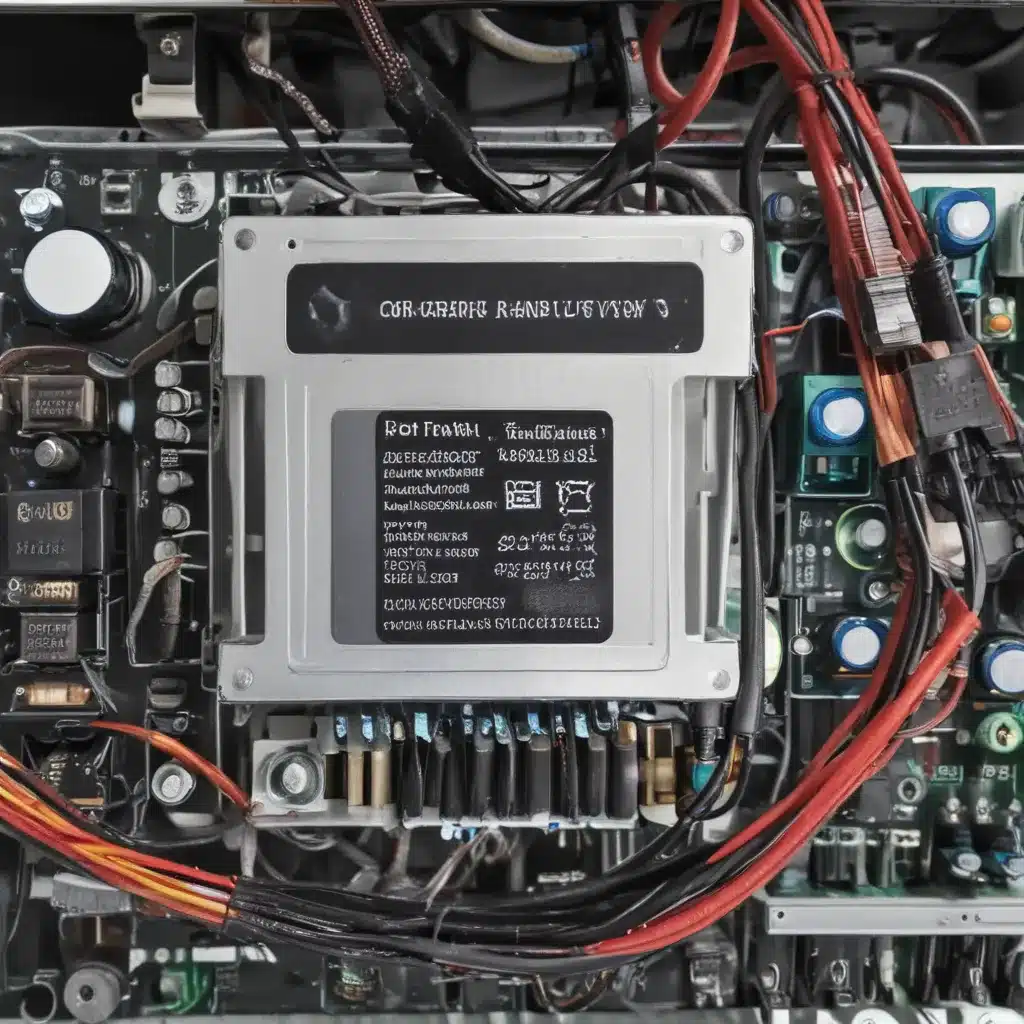The Troubleshooting Journey Begins
As a UK-based computer repair enthusiast, I’ve encountered my fair share of power supply issues over the years. When a customer brought in their desktop PC with a dead power supply, I knew I was in for an interesting challenge. Little did I know, this repair job would turn into a thrilling adventure, complete with surprising twists and a triumphant conclusion.
The customer’s complaint was straightforward: the machine wouldn’t power on at all. My first step was to visually inspect the power supply unit (PSU) for any obvious signs of damage or failure. After a thorough examination, I couldn’t find any visible issues – no bulging capacitors, scorched components, or other telltale signs of trouble. [1] This left me with a bit of a mystery on my hands.
Diving Deep into the PSU Circuitry
Determined to get to the bottom of the problem, I decided to crack open the PSU and take a closer look at the internals. As I delved into the intricate web of components, I couldn’t help but feel a bit like a medical examiner, carefully dissecting a patient to uncover the root cause of their ailment. [2]
Upon closer inspection, everything appeared to be in relatively good condition. The transformer, rectifier, and other key components seemed to be functioning properly. However, when I tested the output voltages, I was met with a disappointing discovery – the 12V rail was completely dead. [2]
Narrowing Down the Culprit
With the problem now clearly identified, I knew I had to start systematically troubleshooting the circuit to find the root cause. I took a deep breath and prepared to embark on a methodical investigation, leaving no stone unturned. [2]
First, I checked the fuse, just in case it had blown. Thankfully, it was still intact. Next, I closely inspected the power transistors, diodes, and other critical components, looking for any signs of damage or failure. [2] Everything seemed to be in working order, save for one resistor that looked a bit worse for wear.
Undeterred, I decided to power up the PSU and take some voltage measurements, hoping to pinpoint the issue. To my relief, the input voltages were exactly as they should be, indicating the problem was likely further down the circuit. [2] This gave me a glimmer of hope that the fix might not be as daunting as I had initially feared.
Tracking Down the Culprit
With the problem narrowed down to the secondary side of the transformer, I knew I needed to dig deeper. I carefully removed the switching transistor, Q2, from the board and began testing it. [2] To my surprise, the base-emitter junction was open, and the base-collector junction was shorted – a clear sign that this component had failed.
Feeling a sense of relief and accomplishment, I set out to find a suitable replacement for Q2. After scouring the internet and consulting datasheets, I settled on a compatible transistor that met the power supply’s requirements. [2] With the new part in hand, I carefully soldered it into the circuit, eager to see if my diagnosis and repair had been successful.
Reviving the Power Supply
With bated breath, I reconnected the power supply to the mains and held my breath as I flipped the switch. To my delight, the power supply sprang to life, the 12V rail providing the expected output voltage. [2] The repair had been a success!
Feeling a sense of pride and accomplishment, I decided to take the opportunity to “upcycle” the power supply, replacing the aging electrolytic capacitors and a few other components that showed signs of wear. [2] After a thorough cleaning and a final adjustment of the voltage trimmer, the power supply was looking and performing better than ever.
The Final Test
To ensure the power supply was truly back in top shape, I decided to put it through its paces under load conditions. I assembled a test rig using a series of resistors, simulating a real-world load scenario. [2] As I watched the voltage and current readings, I was pleased to see the power supply performing flawlessly, delivering the necessary power with rock-solid stability.
The only quirk I noticed was a faint high-pitched hiss coming from the transformer, which I suspected might be due to either mechanical wear or the replacement components I had installed. [2] But hey, at least the power supply was up and running, and that’s what really mattered.
Wrapping Up
As I packed up the repaired power supply and prepared to return it to the customer, I couldn’t help but feel a sense of satisfaction. What had started as a seemingly straightforward repair job had turned into an engaging, problem-solving adventure. Along the way, I had learned valuable lessons about power supply troubleshooting, component testing, and the art of bringing a neglected piece of hardware back to life.
This experience reminded me why I love this line of work – the thrill of the chase, the satisfaction of a job well done, and the knowledge that I had saved a perfectly good power supply from the landfill. [3][4][5][6][7][8] With a smile on my face, I handed the revived power supply back to the customer, knowing that I had not only fixed their machine but also added a little bit of magic to their day.













